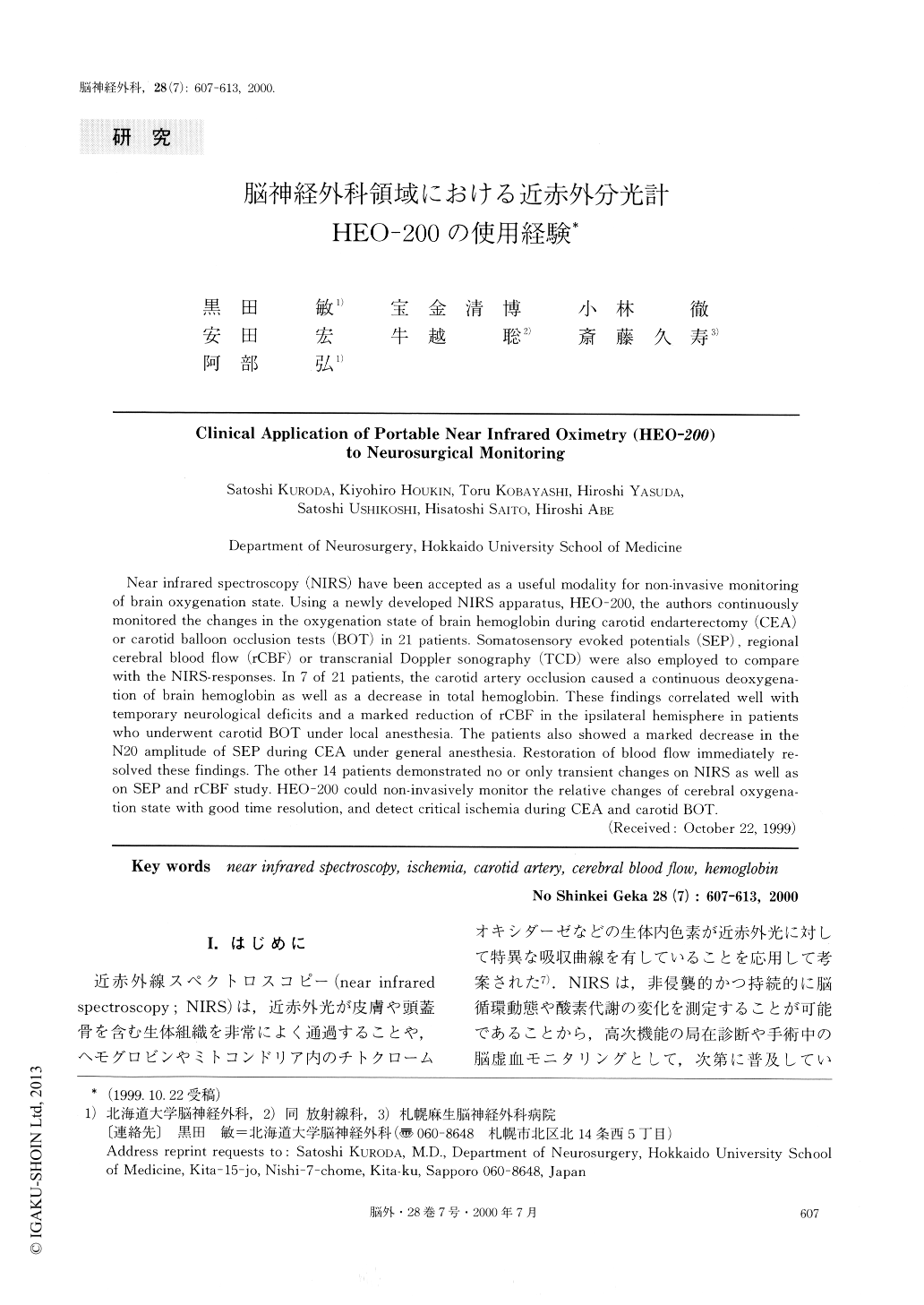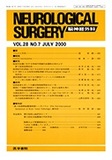Japanese
English
- 有料閲覧
- Abstract 文献概要
- 1ページ目 Look Inside
I.はじめに
近赤外線スペクトロスコピー(near infrared spectroscopy;NIRS)は,近赤外光が皮膚や頭蓋骨を含む生体組織を非常によく通過することや,ヘモグロビンやミトコンドリア内のチトクロームオキシダーゼなどの生体内色素が近赤外光に対して特異な吸収曲線を有していることを応用して考案された7).NIRSは,非侵襲的かつ持続的に脳循環動態や酸素代謝の変化を測定することが可能であることから,高次機能の局在診断や手術中の脳虚血モニタリングとして,次第に普及している1,2,10-15,22).
われわれは以前,島津製作所社製の近赤外分光計OM-100AあるいはOM-110)を用いて頸動脈内膜剥離術(carotid endarterectomy;CEA)や内頸動脈のバルーン閉塞試験(balloon occlusion test;BOT)の際に,NIRSによる脳内ヘモグロビンの酸素化状態やチトクロームオキシダーゼの酸化還元状態をモニターすることの重要性を強調してきた13-15).今回,われわれは新たに開発されたより軽量で小型の近赤外分光計16)を,脳神経外科領域のモニタリングとして使用して,その有用性を確認したため報告する.
Near infrared spectroscopy (NIRS) have been accepted as a useful modality for non-invasive monitoring of brain oxygenation state. Using a newly developed NIRS apparatus, HEO-200, the authors continuously monitored the changes in the oxygenation state of brain hemoglobin during carotid endarterectomy (CEA) or carotid balloon occlusion tests (BOT) in 21 patients. Somatosensory evoked potentials (SEP), regional cerebral blood flow (rCBF) or transcranial Doppler sonography (TCD) were also employed to compare with the NIRS-responses. In 7 of 21 patients, the carotid artery occlusion caused a continuous deoxygena-tion of brain hemoglobin as well as a decrease in total hemoglobin. These findings correlated well with temporary neurological deficits and a marked reduction of rCBF in the ipsilateral hemisphere in patients who underwent carotid BOT under local anesthesia. The patients also showed a marked decrease in the N20 amplitude of SEP during CEA under general anesthesia. Restoration of blood flow immediately re-solved these findings. The other 14 patients demonstrated no or only transient changes on NIRS as well as on SEP and rCBF study. HEO-200 could non-invasively monitor the relative changes of cerebral oxygena-tion state with good time resolution, and detect critical ischemia during CEA and carotid BOT.

Copyright © 2000, Igaku-Shoin Ltd. All rights reserved.


